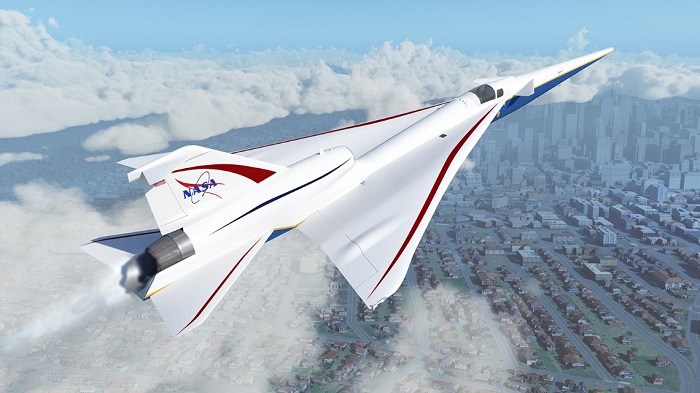ISABEL RUBIO ARROYO | Tungsteno
Flying saucers, drones that deliver goods and create rain in the desert or robots that can erect houses in two days. These are some of the technological trends of the year that we at Tungsteno have reported on. Among the most read topics of 2021, we also highlight historical milestones of innovation, such as the breaking of the sound barrier, the erection of the most iconic bridge in the world or the enigma of how the ancient Egyptians managed to build the pyramids.
#5
Secrets of the only wonder of the ancient world still standing
The Great Pyramid of Giza has endured for more than 4,000 years. And there are no other wonders of the ancient world left standing, since 1494 when the remains of the Mausoleum at Halicarnassus, which had succumbed to successive earthquakes, were dismantled. What is extraordinary is not just that the surviving structure is by far the oldest member of this mythical list of seven architectural wonders, meaning that the ancient Egyptians beat later and supposedly more technologically advanced civilisations, such as the Babylonians and Greeks.
What is most striking, in fact, is that the Pyramid of Cheops remains, to a large extent, an engineering enigma even to our contemporary civilisation. Science, hand in hand with state-of-the-art technology, is searching for answers to the eternal question: How did they manage to lift blocks weighing several tonnes up the sides of the pyramids? The answer may lie in large cavities and internal ramps that recent studies have uncovered by using muon tomography to see inside the pyramid without desecrating it.

A team of scientists found a huge void more than 30 metres long inside the Great Pyramid a few years ago. Credit: ScanPyramids.
#4
Straw-bale houses revived as an energy-saving trend
A wolf's huffing and puffing was enough to bring down a straw house in the story of The Three Little Pigs. But, in reality, houses made from straw can be very strong, as well as being thermally and acoustically well insulated. When the straw is arranged in the form of bales and the air is removed, its combustibility is minimal. In addition, the walls of these constructions are often covered with lime, clay or earth for added protection. Passive houses optimise energy consumption without sacrificing comfort, design or safety.

With minimal environmental impact and material costs, the straw-bale house is one of the best examples of passive homes. Credit: EarthCraft Construction
#3
Flying cars and other tech trends for 2021
While Hyundai caused a stir a few years ago when it unveiled a car with legs that could walk and climb, 2021 began with all eyes on a flying car. The PAL-V Liberty, a hybrid between a traditional vehicle and a helicopter, was unveiled at CES in Las Vegas, the world's largest technology showcase. After a year marked by the COVID-19 pandemic, the spotlight has shifted to robotic nurses, waiters, butlers and sanitisers. Digital health, along with the progressive deployment of 5G and smart cities, were undoubtedly the technology trends of the year.

The PAL-V Liberty, a hybrid between a traditional vehicle and a helicopter, was developed by a Dutch company. Credit: Credit: PAL-V.
#2
How we broke the sound barrier to fly in record time
Travelling from London to New York, Los Angeles to Tokyo or Madrid to Boston in just three hours would be possible with supersonic aircraft. The first flight to break the sound barrier took place in 1947. The Bell X-1, a plane whose shape mimicked that of a machine gun bullet, reached 1,299 kilometres per hour. Although that technological dream faded within a few decades, NASA and other aeronautical giants are now trying to resurrect it. But in addition to the challenge of mitigating noise pollution, there is also the need to make such flights affordable.

NASA is designing the X-59 to achieve supersonic flight without producing a sonic boom when it breaks the sound barrier. Credit: NASA.
#1
How the world's most iconic bridge was built
At its opening, thousands of people competed to be the first to run or skate across what was then the longest suspension bridge on the planet. The construction of the Golden Gate Bridge was considered a "mission impossible" in the 1930s. In addition to the technical and safety challenges, it was feared that in the midst of the Great Depression, economic barriers would block its success. But this was not the case. The 2,737-metre-long architectural landmark is crossed by 40 million cars every year. In addition to being the backdrop for films such as Vertigo, Superman and Godzilla, the Golden Gate Bridge has become San Francisco's most iconic symbol.

Located in San Francisco's North Bay, the Golden Gate Bridge is one of the longest suspension bridges in the world. Credit: Golden Gate Bridge, Highway and Transportation District.
Beyond the pyramids or the Golden Gate Bridge, Tungsteno has also analysed other constructions that made history; for example, some Olympic wonders of architecture, monuments that took centuries to complete and the most original buildings in the world, along with more invisible infrastructure such as the network of submarine cables that give life to the Internet. We have also explored various initiatives to combat pollution, from plastic that decomposes in the Sun to smart traffic lights and solar sails to curb pollution on cruise ships. And we have profiled some interesting characters. We looked at the women who broke the mould of architecture and changed the history of computing, and the three visionary scientists who predicted today's world.
· — —
Tungsteno is a journalism laboratory to scan the essence of innovation. Devised by Materia Publicaciones Científicas for Sacyr’s blog.
